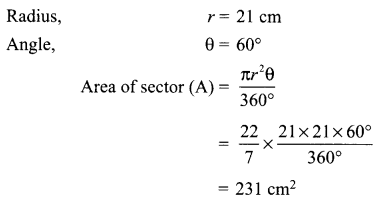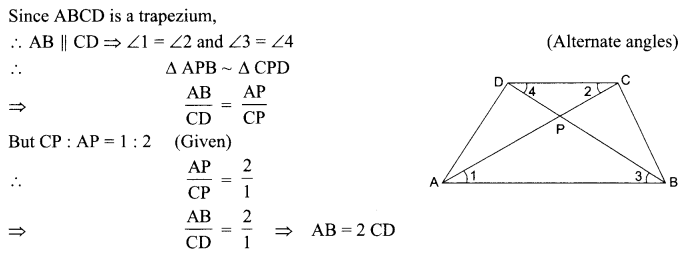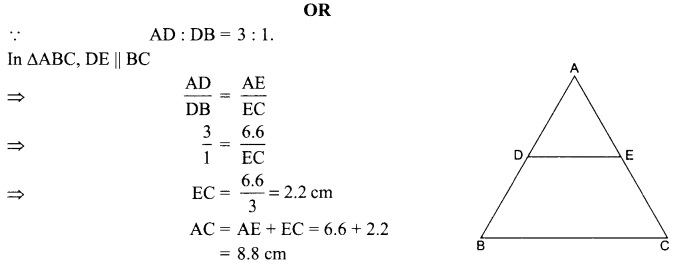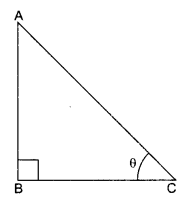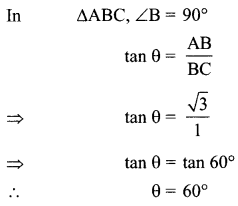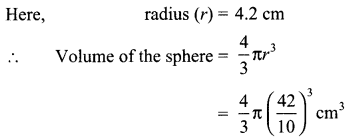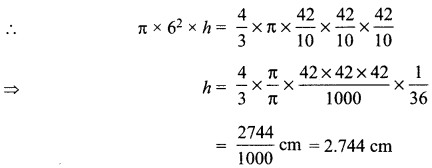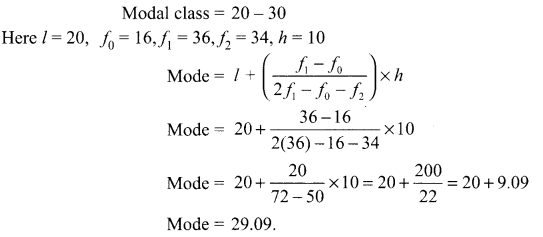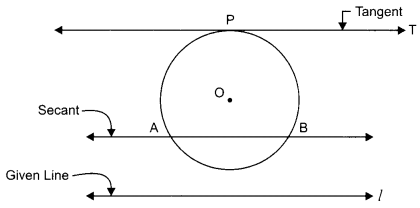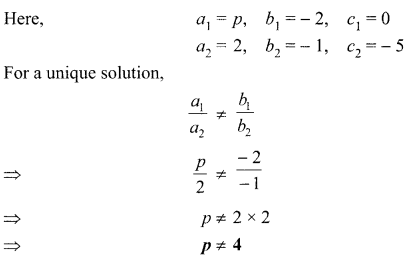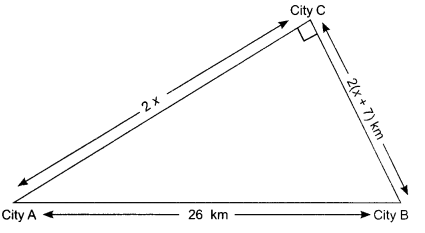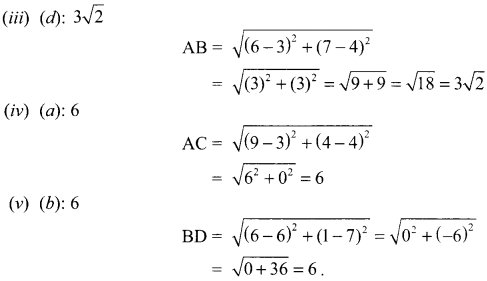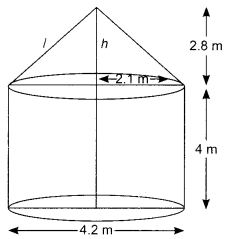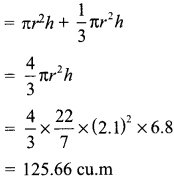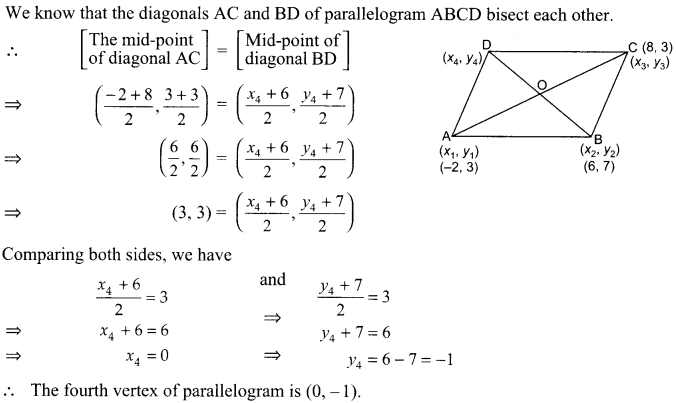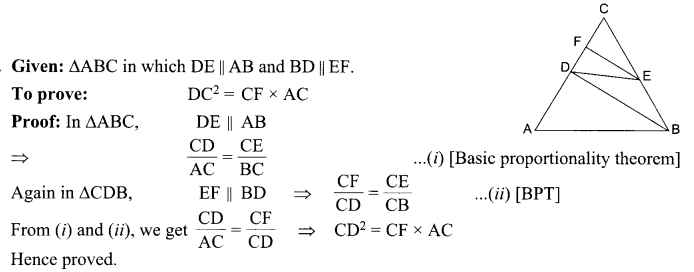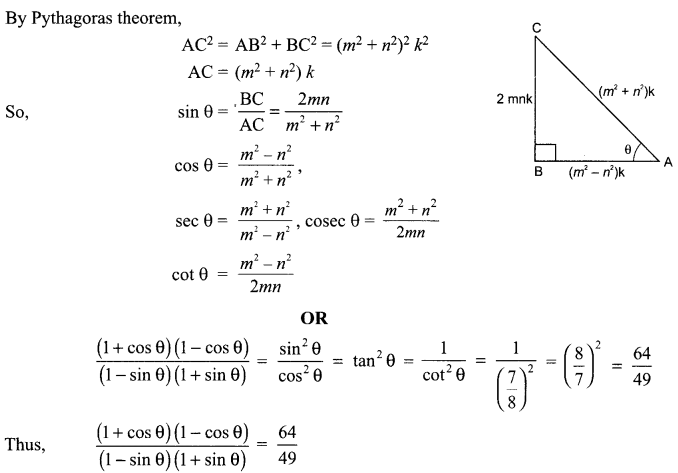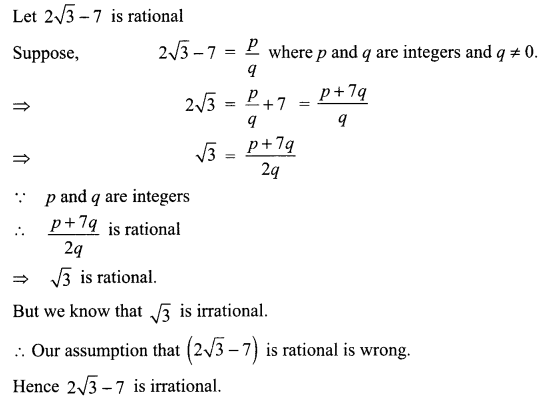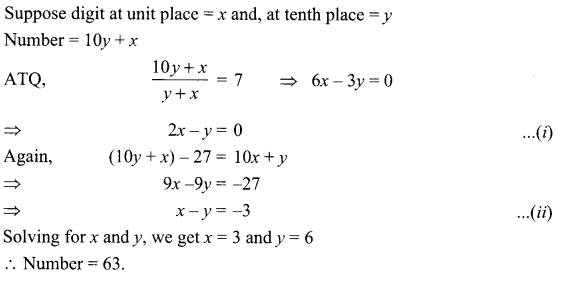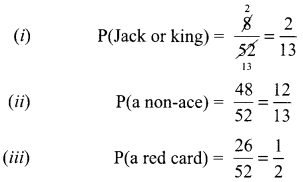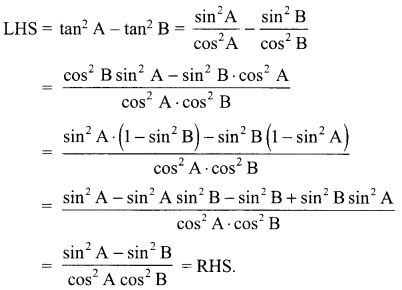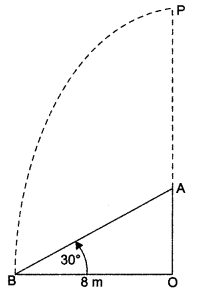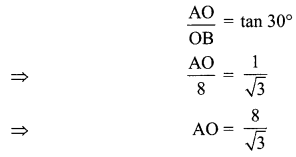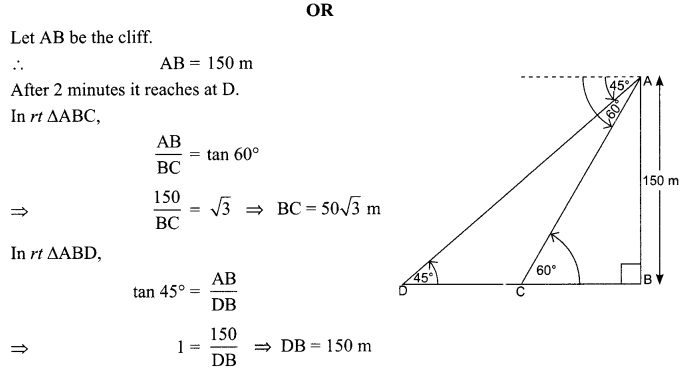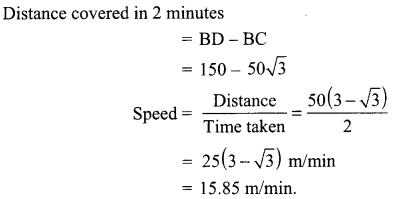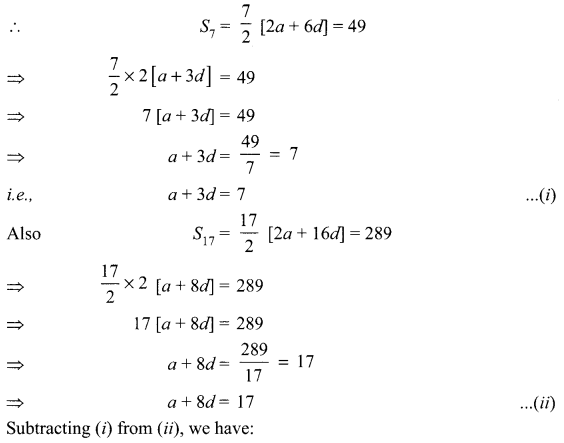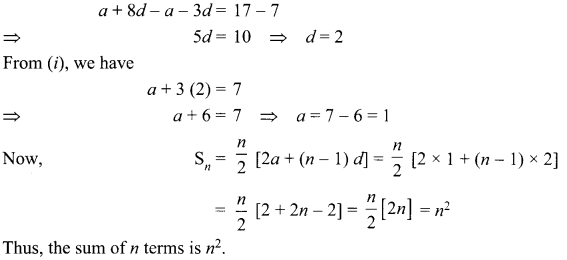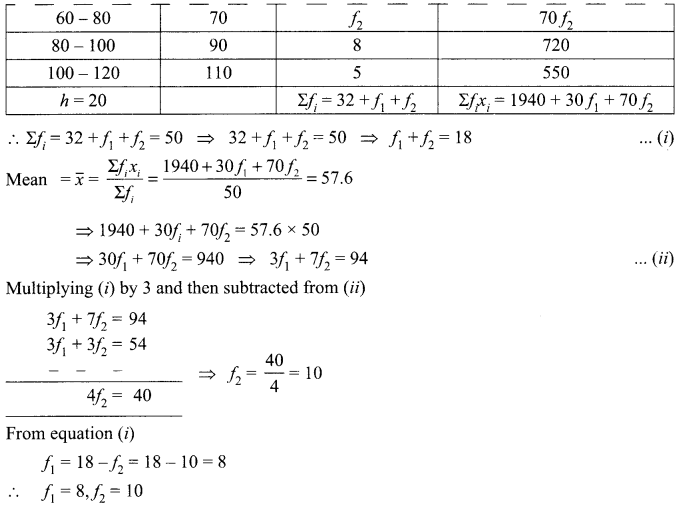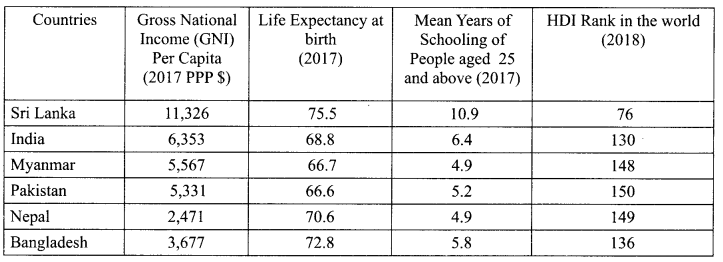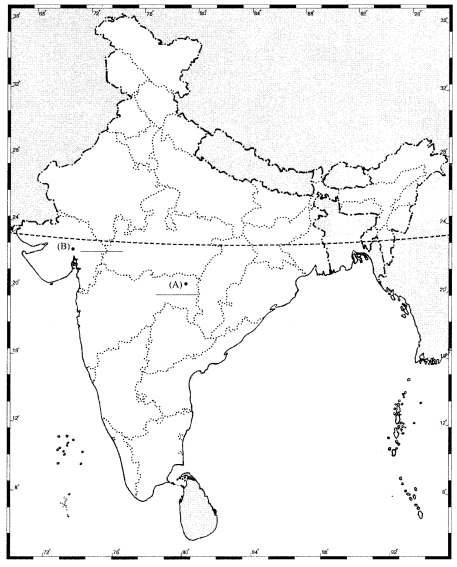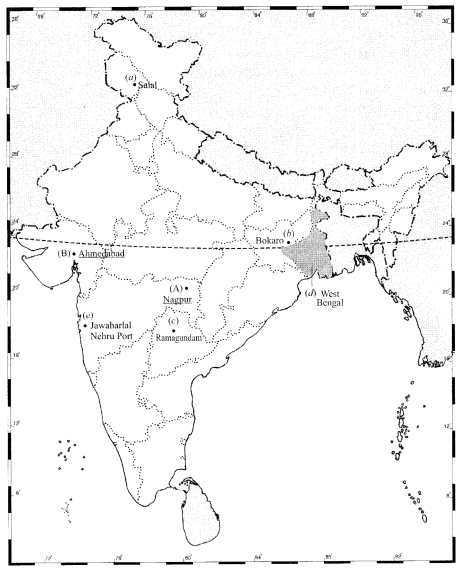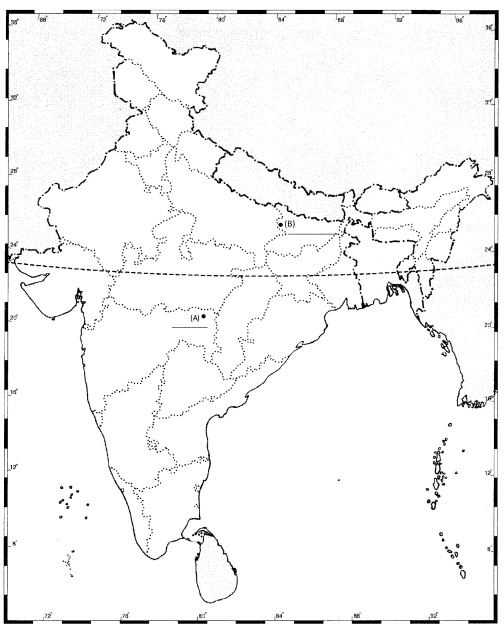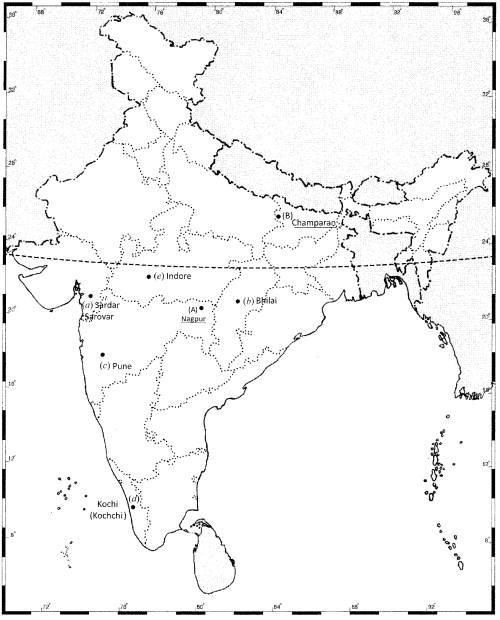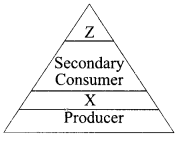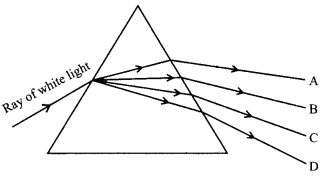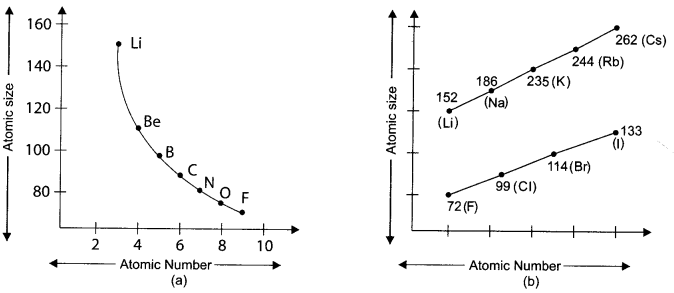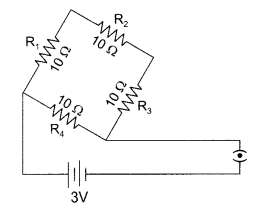Students can access the CBSE Sample Papers for Class 10 English with Solutions and marking scheme Set 5 will help students in understanding the difficulty level of the exam.
CBSE Sample Papers for Class 10 English Set 5 with Practice
Time: 3 Hours
Maximum Marks: 80
General Instructions:
1. This paper is divided into two parts: A and B. All questions are compulsory.
2. Separate instructions are given with each section and question, wherever necessary. Read these instructions very carefully and follow them.
3. Do not exceed the prescribed word limit while answering the questions.
Part-A
Multiple Choice Questions (40 Marks)
Reading (20 Marks)
Question 1.
Read the passage given below. (10 Marks)
1. One day Gandhiji and Vallabhbhai Patel were talking in the Yeravda jail when Gandhiji remarked, “At times even a dead snake can be of use.” And he related the following story to illustrate his point: Once a snake entered the house of an old woman. The old woman was frightened and cried out for help. Hearing her, the neighbours rushed up and killed the snake. Then they returned to their homes. Instead of throwing the dead snake far away, the old woman flung it onto her roof.
2. Sometime later a kite flying overhead spotted the dead snake. In its beak, the kite had a pearl necklace which it had picked up from somewhere. It dropped the necklace and flew away with the dead snake. When the old woman saw a bright, shining object on her roof she pulled it down with a pole. Finding that it was a pearl necklace she danced with joy!
3. One day a bania found a snake in his house. He could not find anyone to kill it for him and had not the courage to kill it himself. Besides, he hated killing any living creature. So, he covered the snake with a pot and let it there.
4. As luck would have it, that night some thieves broke into the bania’s house. They entered the kitchen and saw the overturned pot. “Ah”, they thought, “the bania has hidden something valuable here.” As they lifted the pot, the snake struck. Having come with the object of stealing, they barely left with their lives.
5. Once he came out of jail, Gandhiji went from city to city, village to village collecting funds for the Charkha Sangh. During one of his tours, he addressed a meeting in Orissa.
6. After his speech a poor old woman got up. She was bent with age, her hair was grey and her clothes were in tatters. The volunteers tried to stop her, but she fought her way to the place where Gandhiji was sitting. “I must see him,” she insisted, and going up to Gandhiji, she touched his feet.
7. Then from the folds of her sari, she brought out a copper coin and placed it at his feet. Gandhiji picked up the copper coin and put it away carefully.
8. The Charkha Sangh funds were under the charge of Jamnalal Bajaj. He asked Gandhi for the coin but Gandhi refused.
On the basis of your understanding of the passage, answer any ten questions from the twelve that follow. (10 × 1 = 10)
(i) The old woman was frightened and cried out for help:
(a) on seeing a snake
(b) out of joy
(c) to disturb others
(d) None of these
Answer:
(a) on seeing a snake
(ii) The bania could not kill the snake because:
(a) he was kind to living creatures
(b) he could not find anyone
(c) he had no courage to kill it himself
(d) All of these
Answer:
(d) All of these
(iii) The thieves thought the bania had hidden something valuable:
(a) under the stone
(b) in the box
(c) under the pot
(d) in the hole
Answer:
(c) under the pot
(iv) What did the old woman give to Gandhiji?
(a) Copper coin
(b) Sari
(c) Shawl
(d) Charkha
Answer:
(a) Copper coin
(v) What is the synonym of the word ‘denied’ in para 8?
(a) Asked
(b) Charge
(c) Refused
(d) Funds
Answer:
(c) Refused
(vi) Where did the old woman throw the dead snake?
(a) In the field
(b) In the well
(c) On the roof
(d) On the tree
Answer:
(c) On the roof
(vii) What expresses best the meaning of ‘at times even a dead snake can be of use’?
(a) Even useless things can be used sometimes
(b) Dead snakes are of use
(c) Dead animals are useful
(d) Things are useful when they are dead
Answer:
(a) Even useless things can be used sometimes
(viii) What is the line that best sums up paragraph 2?
(a) People are greedy
(b) Greed is good
(c) Everything falls into place
(d) Everything has its use
Answer:
(c) Everything falls into place
(ix) What are the two correct meanings of the word ‘illustrate’?
1. To use pictures etc in a book
2. To draw a clear image
3. To paint clearly
4. To make meaning of something clear using examples
(a) 1 and 2
(b) 1 and 3
(c) 1 and 4
(d) 2 and 4
Answer:
(c) 1 and 4
(x) Select the option that makes the correct use of ‘address’ as used in the passage, to fill in
the blanks.
(a) The parliament speaker has right to ………………. the audience sitting there.
(b) Could you please write the correct …………………. and mail?
(c) You cannot leave behind luggage and ………………
(d) His letter is now ………………… to have been a mistake.
Answer:
(a) The parliament speaker has right to ………………. the audience sitting there.
(xi) The kite did not know the value of …………….. and dropped it.
(a) snake
(b) pearl
(c) pot
(d) clothes
Answer:
(b) pearl
(xii) The old woman wanted to touch Gandhiji’s feet:
(a) to pay him respect
(b) to rebuke him
(c) to greet him
(d) to give him a coin
Answer:
(a) to pay him respect
Question 2.
Read the passage given below: (10 Marks)
1. Man suffers from a distorted complex. He always considers animals as inferior beings only fit for exploitation. Man has been using domestic and wild animals for his selfish ends. Many animal lovers joined together to form the ‘Society for Prevention of Cruelty to Animals’.
2. The society has been working for the well-being and welfare of animals for many years. Its main aim is to change the attitude and thinking of people towards animals. It is quite sad that animals continue to be ill-treated, tortured and killed according to the whims of the people. About 15% of the people entertain the belief that animals are man’s slaves. They use, misuse and torture them accordingly. About 50% of the people exploit animals for selfish ends.
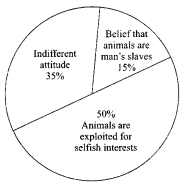
3. Horses and oxen are used for transport, carrying loads and in agricultural activities. Dogs, cats and many birds are domesticated for fun, entertainment and convenience. Wild animals like elephants, tigers, lions and deer are victims of poaching and killing. Animals are forced to do acrobatic feats in circus shows. Unfortunately, about 35% of people don’t think about the animals at all. They are totally indifferent to them.
4. The Government and the animal lovers must work together to bring a change in the attitude of the people. Animals should not be killed and poached for fun, furs or financial gains. They should be treated with kindness, care and sympathy. Cruelty towards animals must be legally punished.
On the basis of your understanding of the passage, answer any ten questions from the twelve that follow. (10 × 1 =10)
(i) In the line “………..-fit for exploitation”, the word ‘exploitation’ does not refer to:
(a) abuse
(b) ill-treatment
(c) oppression
(d) utilisation
Answer:
(d) utilisation
(ii) Based on your understanding of the passage, choose the option that lists the abuses of animals.
1. Used for transport
2. Used for carrying loads
3. Acrobatic feats in circus
4. Poaching
5. Agricultural activities
6. Domesticated for fun
(a) 1 and 2
(b) 2 and 6
(c) 5and 6
(d) 3and 4
Answer:
(d) 3and 4
(iii) Man always considers animals as:
(a) superior beings
(b) inferior beings
(c) powerful beings
(d) All of these
Answer:
(b) inferior beings
(iv) Man considers animals fit for:
(a) exploitation
(b) working hard
(c) helping man
(d) None of these
Answer:
(a) exploitation
(v) To serve his purpose, man has always been using:
(a) domestic animals
(b) wild animals
(c) Both (a) and (b)
(d) Neither (a) nor (b)
Answer:
(c) Both (a) and (b)
(vi) For many years, ‘Society for Prevention of Cruelty to Animals’ has been working for:
(a) destruction of animals
(b) exploitation of animals
(c) the welfare of animals
(d) All of these
Answer:
(c) the welfare of animals
(vii) ‘ Society for Prevention of Cruelty to Animals ’ aims to change the attitude of man towards:
(a) other people
(b) animals
(c) plants
(d) society
Answer:
(b) animals
(viii) It is very disappointing that animals are still:
(a) ill-treated
(b) tortured
(c) killed
(d) All of these
Answer:
(d) All of these
(ix) For what activities do people use horses and oxen?
(a) Carrying loads
(b) Transport
(c) Agricultural activities
(d) All of these
Answer:
(d) All of these
(x) For fun, entertainment and convenience, man domesticates:
(a) birds
(b) cats
(c) dogs
(d) All of these
Answer:
(d) All of these
(xi) Which of these animals is/are victims of poaching and killing?
(a) Lions
(b) Tigers
(c) Elephants
(d) All of these
Answer:
(d) All of these
(xii) Choose the option that lists statement that is NOT TRUE.
(a) Animals must not be exploited by man
(b) Animals should be treated well
(c) Animals should be killed only for food
(d) Animals can be used in circus to earn one’s livelihood
Answer:
(c) Animals should be killed only for food
Literature (10 Marks)
Question 3.
Read the extracts given below and attempt any one by answering the questions that follow. (5 × 1 = 5)
A. Even when each of his brothers and his little sister, whose wings were far shorter than his own, ran to the brink, flapped their wings, and flew away, he failed to muster up courage to take that plunge which appeared to him so desperate. His father and mother had come around calling to him shrilly, upbraiding him, threatening to let him starve on his ledge unless he flew away. But for the life of him he could not move.
(i) The young seagull’s brothers and his sister had:
(a) beautiful wings than him
(b) longer wings than him
(c) stronger wings than him
(d) shorter wings than him
Answer:
(d) shorter wings than him
(ii) His parents, brother and sister regularly:
(a) supported him
(b) chided him
(c) scolded and threatened him
(d) accompanied him
Answer:
(c) scolded and threatened him
(iii) Who threatened the young seagull to starve on the ledge?
(a) His brother
(b) His sister
(c) His parents
(d) His mother
Answer:
(c) His parents
(iv) What could happen to him if he tried flying?
(a) He could fall into the sea
(b) He could fall over the rock
(c) He could fall on the ledge
(d) He could not get food
Answer:
(a) He could fall into the sea
(v) The extract uses the phrase, ‘flew away’. Which of these expressions is incorrect with
respect to the word ‘flew’?
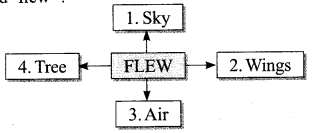
(a) Option 1
(b) Option 2
(c) Option 3
(d) Option 4
Answer:
(d) Option 4
B. “I am sure that none of the boys and girls in Room Thirteen would purposely and deliberately hurt anyone’s feelings because his or her name happened to be a long, unfamiliar one.” “I prefer to think that what was said was said in thoughtlessness. I know that all of you feel the way I do, that this is a very unfortunate thing to have happened – unfortunate and sad, both. And I want you all to think about it.”
(i) What was said was said in:
(a) a thoughtful manner
(b) a casual manner
(c) in a deliberate manner
(d) thoughtlessness manner
Answer:
(d) thoughtlessness manner
(ii) None of the boys and girls:
(a) did it happily
(b) listened to the letter
(c) knew Peggy and Maddie
(d) did it purposely and deliberately
Answer:
(d) did it purposely and deliberately
(iii) Who is ‘I’ here?
(a) Wanda’s father
(b) Miss Mason
(c) Maddie
(d) Peggy
Answer:
(b) Miss Mason
(iv) What unfortunate thing had happened?
(a) Wanda had left the school
(b) Peggy had left the school
(c) Maddie had left the school
(d) None of these
Answer:
(a) Wanda had left the school
(v) Which word does ‘thoughtlessness’ NOT correspond to?
(a) Inconsiderate
(b) Careful
(c) Uncaring
(d) Insensitive
Answer:
(b) Careful
Question 4.
Read the extracts given below and attempt any one by answering the questions that follow. (5 × 1 = 5)
A. He stalks in his vivid stripes
The few steps of his cage,
On pads of velvet quiet,
In his quiet rage.
He should be lurking in shadow,
Sliding through long grass
Near the water hole
Where plump deer pass.
(i) The tiger is able to take only a few steps because:
(a) the cage is too small
(b) the forest is too small
(c) he is too weak to walk more
(d) he is afraid of the visitors
Answer:
(a) the cage is too small
(ii) What is the rhyme scheme of the given stanzas?
(a) aabb; aabb
(b) abcb; abed
(c) abcb, abcb
(d) abca; abca
Answer:
(c) abcb, abcb
(iii) One cannot hear the sound of the tiger’s footsteps because:
(a) he was unable to move anywhere
(b) he has very soft feet like velvet
(c) no one goes around him
(d) he was moving in the cage
Answer:
(b) he has very soft feet like velvet
(iv) According to the extract, if the tiger were free, he would have hidden himself behind:

(a) option (1)
(b) option (2)
(c) option (3)
(d) option (4)
Answer:
(b) option (2)
(v) What is the tiger in the cage NOT able to do?
(a) Take sound sleep
(b) Move a long distance
(c) Catch his prey
(d) Sit properly
Answer:
(c) Catch his prey
B. What is the boy now, who has lost his ball
What, what is he to do? I saw it go
Merrily bouncing, down the street, and then
Merrily over – there it is in the water!
No use to say ‘O there are other balls’;
An ultimate shaking grief fixes the boy’
As he stands rigid, trembling, staring down
All his young days into the harbour where
His ball went.
(i) The poet wants to know about the boy’s:
(a) background
(b) reaction
(c) mood
(d) attitude
Answer:
(b) reaction
(ii) The poet says that the ball was jumping up and down:
(a) in the river
(b) in the street
(c) in boy’s hands
(d) on the roof
Answer:
(b) in the street
(iii) Pick the option that correctly classifies facts (F) and opinions (O) of the students below:
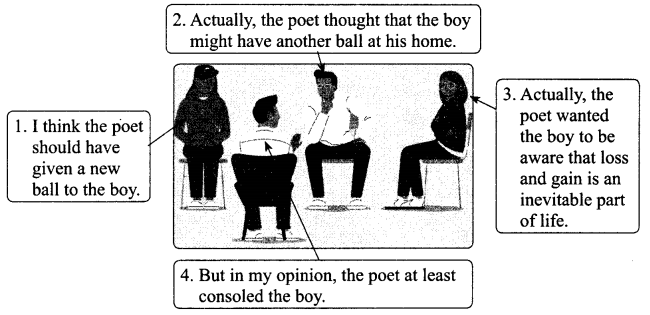
(a) F-1,2 and O – 3,4
(b) F-2,3 and O-1,4
(e) F-1,4 and O-2,3
(d) F-1,3 and O-2,4
Answer:
(b)F-2,3 and O-1,4
(iv) The boy is completely surrounded by:
(a) joy
(b) sorrow
(c) zeal
(d) difficulties
Answer:
(b) sorrow
(v) The lost ball reminds the boy of his:
(a) sweet memories
(b) childhood days
(c) friends
(d) relatives
Answer:
(a) sweet memories
Grammar (10 Marks)
Question 5.
Choose the correct options to fill in the blanks to complete the note about punctuality. (3 × 1 = 3)
Punctuality is of great importance. It is truly underestimated and (i) ………………. utmost importance. When we become punctual, the rest things (ii) …………….. our reach. We learn discipline and (iii) …………….. respect of others.
(i) (a) is given
(b) may given
(c) must give
(d) must be given
Answer:
(d) must be given
(ii) (a) should fall into
(b) can fall into
(c) falls into
(d) does fall into
Answer:
(b) can fall into
(iii) (a) have earn
(b) has earned
(c) earn
(d) does earn
Answer:
(c) earn
Question 6.
Choose the correct options to fill in the blanks to complete the librarian’s narration. (3 × 1 = 3)

I found Mayank sitting on a chair. I(i) ……………. the book. On hearing this, he (ii) ………………. out of station for a week. When I (iii) ……………… at once, he politely said that he worshipped library.
(i) (a) asked him why he hadn’t timely returned
(b) ask him that why he didn’t timely return
(c) told him that why he didn’t timely return
(d) said that why he hadn’t timely return
Answer:
(a) asked him why he hadn’t timely returned
(ii) (a) informed that he had
(b) told that he will
(c) said that he is
(d) replied that he was
Answer:
(d) replied that he was
(iii) (a) asked to return
(b) advised to return
(c) ordered to be returned
(d) said to be return
Answer:
(b) advised to return
Question 7.
Fill in the blanks by choosing the correct options for any four of the six sentences given below. (4 × 1 = 4)
(i) Connaught Place …………………. get smog towers in ten months.
(a) will
(b) can
(c) shall
(d) might
Answer:
(c) shall
(ii) I who ……………… your friend, will assist and protect you.
(a) are
(b) is
(c) am
(d) have
Answer:
(c) am
(iii) There were ……………… than fifty students in the class.
(a) few
(b) no fewer
(c) less
(d) no less
Answer:
(b) no fewer
(iv) I ………………… appear in the Senior Secondary Examination next near.
(a) should
(b) will
(c) shall
(d) may
Answer:
(b) will
(v) Rani Lakshmi Bai is one of the best heroines that ………………… ever been born in India.
(a) has
(b) is
(c) have
(d) are
Answer:
(c) have
(vi) Draw ……………….. map of India on ……………………. black board.
(a) a, the
(b) an, a
(c) an, the
(d) the, a
Answer:
(a) a, the
Part-B – Subjective Questions (40 Marks)
Writing (10 Marks)
Question 8.
Attempt any one of the following in 100-120 words. (5 Marks)
A. Write a letter seeking detailed enquiries from the General Manager, Holiday Inn, Kanpur for conducting the wedding reception of your younger brother at the hotel. Make specific enquiries about the catering cost per head, service and decoration charges. You can also ask for the advance amount to be paid. You are Krishna/Kamini of Kanpur.
B. You are Arjun Kapoor, resident of 43/9, Shyam Enclave, Delhi. You visited Manali with your family during the summer vacation. You had two double suites at Lake View Resort. Your stay at the hotel fell far short of the description in the brochure. Write a letter of complaint to the Customer Service Department to refund for your hotel stay.
Question 9.
Attempt any one of the following in 100-120 words. (5 Marks)
A. In the graph given below we get a shocking picture of deaths in the USA due to Corona Virus that showed a constant upward trend in the month of April 2020. Write an analytic paragraph describing the general trend and other details after analysing the graph.
Increase in Corona Virus Death Cases in USA from April 10 to May 2, 2020
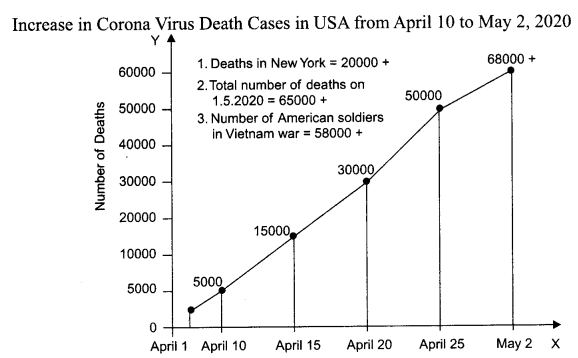
B. The following pie chart represents the distribution of the overseas tourists and their age profile respectively. Study the chart carefully and write an analytic paragraph (120-150 words) giving the general trends and other necessary details. Don’ forget to compare the segments where relevant.
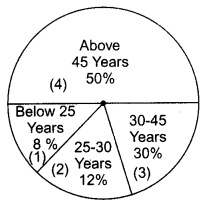
Literature (30 Marks)
Question 10.
Answer any two questions in 20-30 words each, from (A) and (B) respectively. (4 × 2 = 8)
A. (any two) (2 × 2 = 4)
(i) Did Lencho try to find out who had sent the money to him? Why/Why not?
(ii) What was the tiny wish that crept into Valli’s head?
(iii) What did Kisa Gotami do when her only son died? What did her neighbours think about her?
B. (any two) (2 × 2 = 4)
(i) What excuses did Mrs Pumphrey give for not following Dr Herriot’s advice? What was the effect of the ignorance?
(ii) Why did the narrator feel that Bill’s helpfulness for him was not entirely of brotherly love?
(iii) Do you think Mr Loisel had an enjoyable evening at the ball? Give reasons for you answer.
Question 11.
Answer any two questions in 40-50 words each, from (A) and (B) respectively. (4 × 3 = 12)
A. (any two) (2 × 3 = 6)
(i) How did Mandela’s understanding of freedom change with age and experience?
(ii) How is the bravery of Belinda and her pets described in the poem? Do they really prove their courage and bravery?
(iii) There are some examples of diary or journal entries in the ‘Before You Read’ section. Compare these with what Anne writes in her diary. What language was the diary originally written in? In what way is Anne’s diary different?
B. (any two) (2 × 3 = 6)
(i) Describe the family of Ramlal, the Numberdar.
(ii) Describe the strange behaviour of Mrs. Hall’s furniture. How did the chair start moving and push Mr and Mrs Hall out of the room?
(iii) Why did Oliver Lutkins and his mother laugh at the lawyer (the narrator) when he served the summons? Why did Lutkins take him to his neighbour’s house for a cup of coffee?
Question 12.
Answer any one of the following in 100-120 words. (5 Marks)
A. Hesitations and fears play necessary parts in human life but we get success in any enterprise only when we overcome our doubts, hesitations and fears. Justify this statement in the light of the young seagull’s efforts to muster courage to fly in the air.
B. In spite of being so powerful and displaying rare bravery of killing and swallowing the pirate, why does the dragon Custard taunted as being a coward always asking for a nice safe cage?
Question 13.
Answer any one of the following in 100-120 words. (5 Marks)
A. Bholi’s real name is Sulekha. We are told this right at the beginning. But only in the last but one paragraph of the story is Bholi called Sulekha again. Why do you think she is called Sulekha at that point in the story?
B. Do you think the lawyer was gullible? How could he have avoided being taken for a ride?

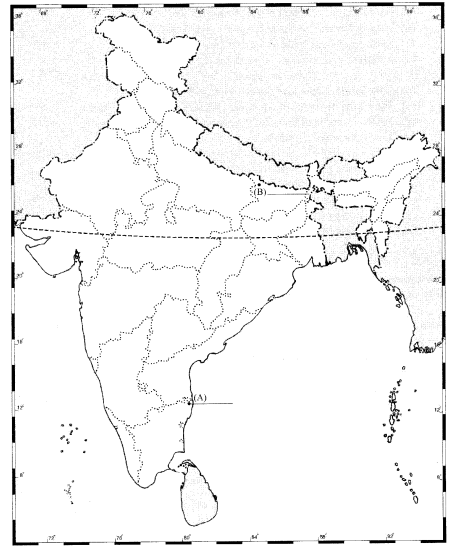
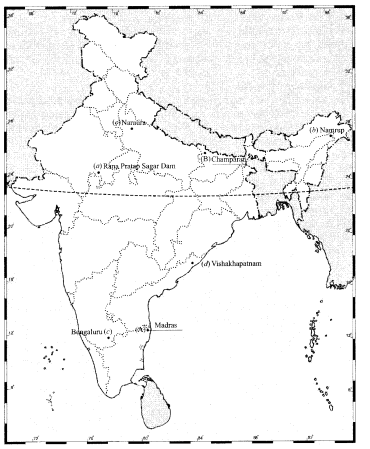

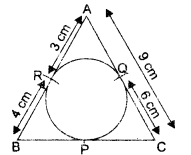
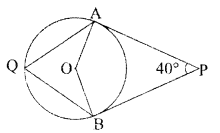
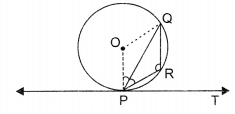
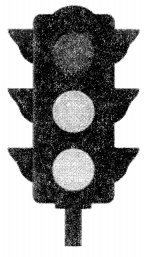

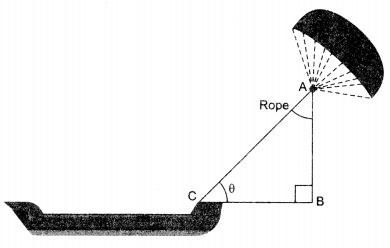
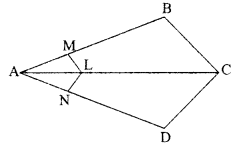
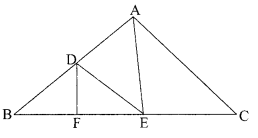
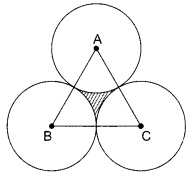

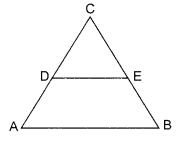
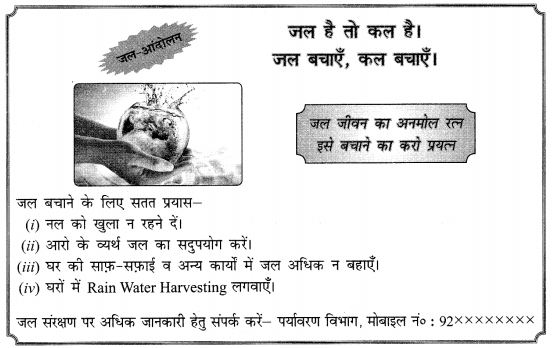
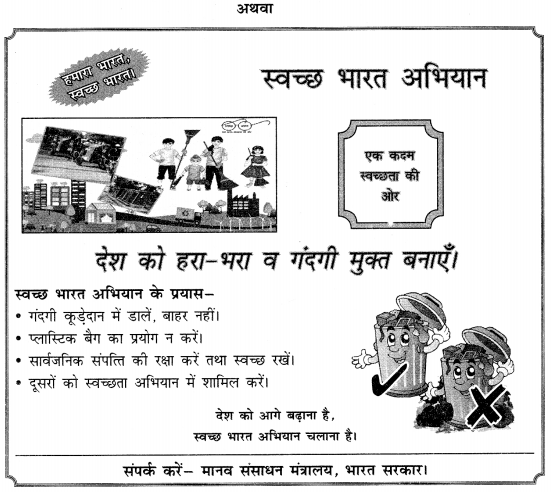
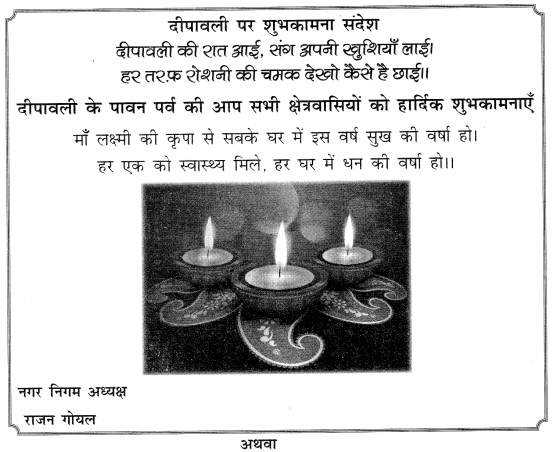
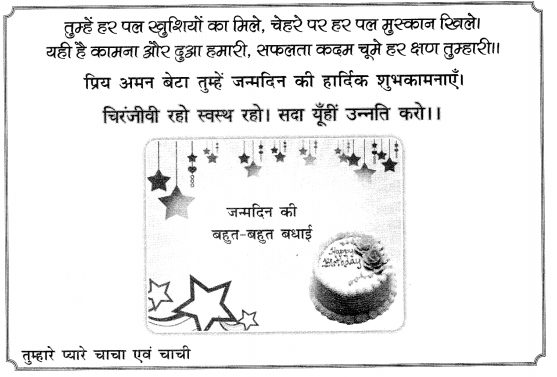
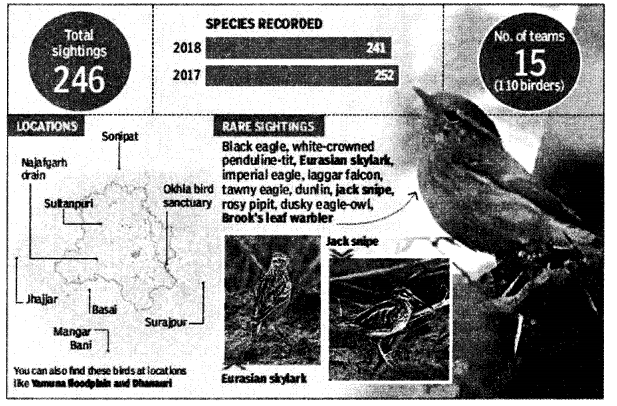
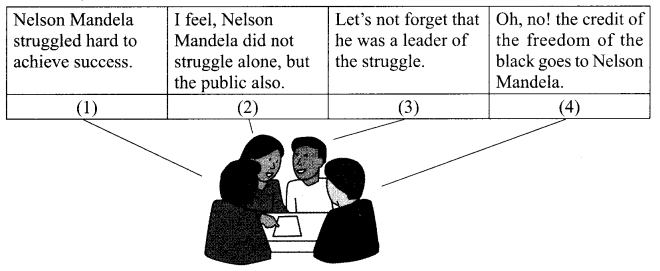

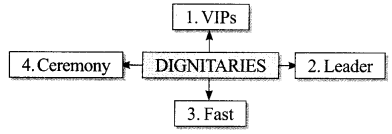

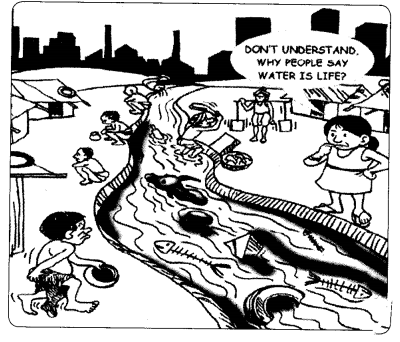
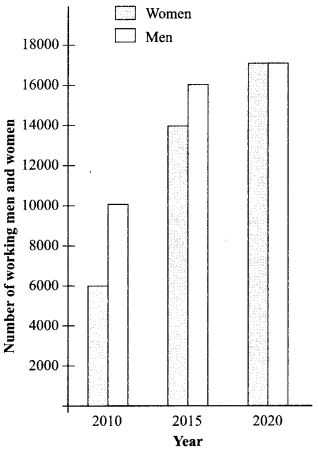
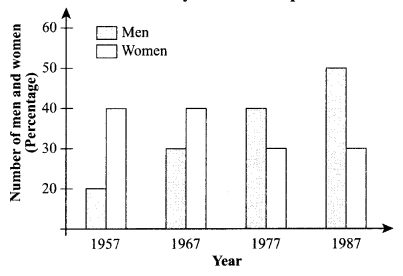

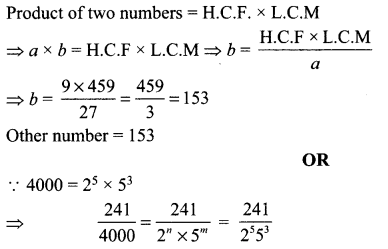

 .
.